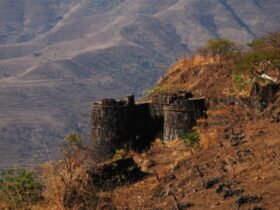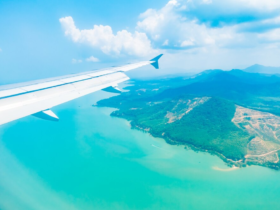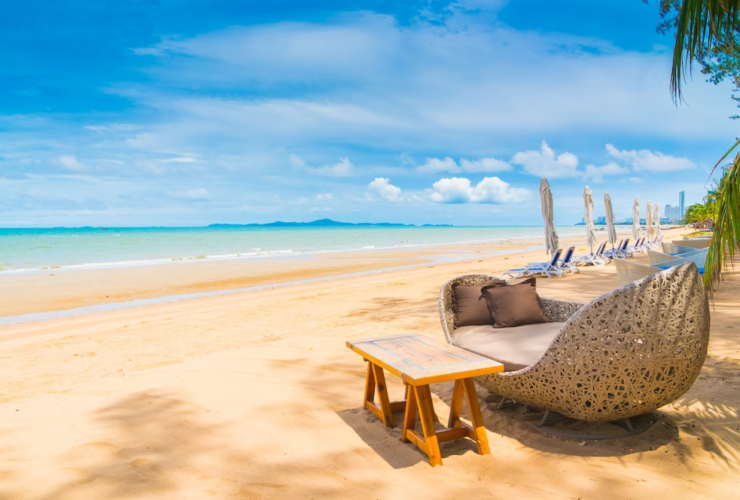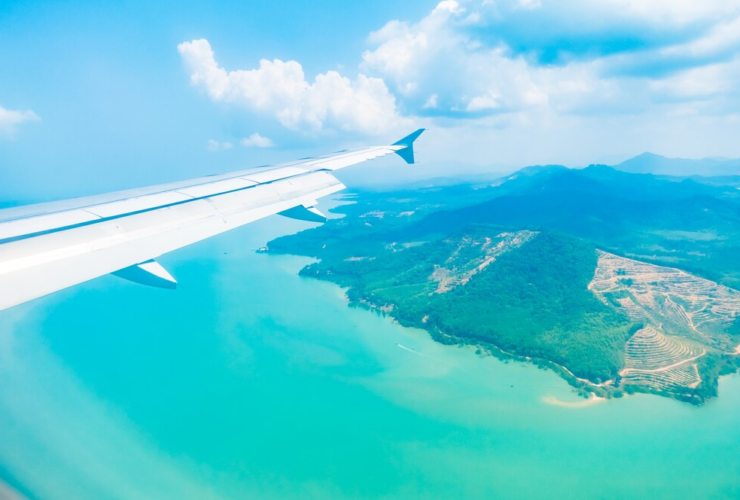The Galapagos islands are an archipelago known for its exceptional biodiversity and distinctive ecosystems. They are situated in the Pacific Ocean off the coast of Ecuador. Charles Darwin’s groundbreaking work made this group of volcanic islands—officially known as the Archipiélago de Colón—famous around the world.

A large portion of the distinctive and varied wildlife that inhabits the Galápagos islands is exclusive to the planet. The marine iguana, the giant tortoise of the Galápagos, and several finches are among the species that were instrumental in the development of Charles Darwin’s theory of evolution through natural selection. Travelers can witness the wonders of nature and obtain a deeper understanding of ecology and evolution by visiting the Galápagos Islands, which offer a singular and breathtaking experience. This location highlights how important it is to travel sustainably and responsibly.
List of Galapagos islands includes:
- Isabela Island
- Santa Cruz Island
- Floreana Island
- Genovesa Island
- Espanola Island
1. Galapagos Island: Isabela Island

One of the most alluring locations in the archipelago is Isabela Island, the largest of the Galápagos islands. With a total area of roughly 4,590 square kilometers (1,770 square miles), Isabela is the largest island in the Galápagos.
Six active shield volcanoes form the island, resulting in a diverse and striking topography. One of the most well-known mountains in the world, the Sierra Negra, is home to the second-largest caldera on Earth.
There is an abundance of marine life all around Isabela Island. When snorkeling and diving, visitors can see marine iguanas, sea lions, and a variety of fish. There are giant tortoises on the island, and Puerto Villamil’s breeding facility is vital to their preservation. For travelers visiting the Galápagos, Isabela Island is a must-see location because of its varied landscapes, profusion of wildlife, and dedication to conservation. Isabela provides an incredibly engaging and unforgettable experience, whether it is hiking through volcanic craters, snorkeling in crystal-clear waters, or seeing rare wildlife.
2. Santa Cruz Island

Galápagos Islands, or Santa Cruz Island, is a central and important island. Santa Cruz is the second-largest island in the Galápagos, and it is located in the middle of the archipelago. There are a variety of elevations on the island, from the lush highlands to the arid lowlands. In order to safeguard the fragile ecosystems, Santa Cruz, Galápagos islands, implements stringent rules for sustainable tourism. Visitors are asked to follow the guidelines in order to lessen their impact on the environment.
There are several massive tortoise reserves in the lush Santa Cruz highlands. Visitors can see these well-known animals in their native habitat at El Chato and Rancho Primicias. Santa Cruz Island provides travelers visiting the Galápagos islands with a comprehensive experience because of its distinctive wildlife, lively town life, and conservation initiatives. Whether they are interacting with giant tortoises, strolling along immaculate beaches, or learning about the latest discoveries, visitors to Santa Cruz are enthralled by the place’s distinct charm.
3. Floreana Island

Floreana Island, one of the Galápagos islands, is well-known for its unique wildlife, pristine landscape, and intriguing past. The smaller island of Floreana is home to a variety of ecosystems and is located in the southern region of the Galápagos archipelago.
The island has a range of highlands, coastal areas, and volcanic formations. The highlands of Floreana are home to enormous tortoises in a more lush and natural environment. Because invasive species threaten rare plants and animals, Floreana actively works to contain and eradicate them. Floreana highlights sustainable tourism practices. It is encouraged of visitors to follow regulations to lessen their impact on the environment.
With its historical landmarks, varied scenery, and distinctive wildlife, Floreana Island provides a comprehensive Galápagos experience.
Floreana’s natural and cultural treasures captivate visitors, who can spend hours snorkeling in Devil’s Crown or learning about Post Office Bay’s intriguing past.
4. Genovesa Island

One of the most amazing and distinctive places to visit in the Galápagos Islands is Genovesa Island, sometimes referred to as Tower Island. Located on the edge of a sizable volcanic caldera, Genovesa is part of the northern Galápagos archipelago. The island is often called the “Island of Birds” because, from a distance, it looks like a bird’s head. With so many different bird species, Genovesa is a birdwatcher’s paradise. The island is home to several seabird colonies, such as those of swallow-tailed gulls, frigatebirds, red-footed and Nazca boobies, and others. The main attraction of Genovesa is its birdlife; snorkeling is possible in the nearby waters. Visitors may see sharks, rays, and different kinds of fish.
The vegetation of Genovesa is distinct and includes halophytes that have adapted to the severe coastal climate. The unique Palo Santo trees grow on the island as well. Like the other Galapagos islands, Genovese is dedicated to environmental preservation. Controlling invasive species is a top concern, and safeguards are in place to preserve the distinctive flora and fauna. Discovering Genovesa Island is a must-do experience for anyone interested in nature while visiting the Galápagos Islands because of its remarkable birdlife, distinctive landscapes, and dedication to conservation. Discover the natural beauties of this secluded and immaculate island by snorkeling in the nearby waters or by observing a variety of seabird colonies.
5. Espanola Island

Galapagos islands southernmost point is Espanola Island, sometimes referred to as Hood Island. The Galápagos Islands‘ southeast tip is home to Espanola.
The island’s varied terrain, which includes rocky cliffs and sandy beaches, leads scientists to believe that volcanic eruptions formed the island. In the world, the waved albatross only builds its nests in Espanola. Visitors can watch these enormous seabirds’ amazing courtship rituals as a significant population of them reside on the island.
Espanola is home to a distinct species of mockingbird that reflects its evolution and adaptability. Discovering Espanola Island offers travelers visiting the Galapagos islands. It is an unforgettable and enriching experience because of its distinctive wildlife, stunning landscapes, and dedication to conservation. Island visitors can take in the pristine beauty of this southern jewel in the archipelago as well as the chance to see rare species.
Read Also: 8 Spectacular Places to Visit in the USA







